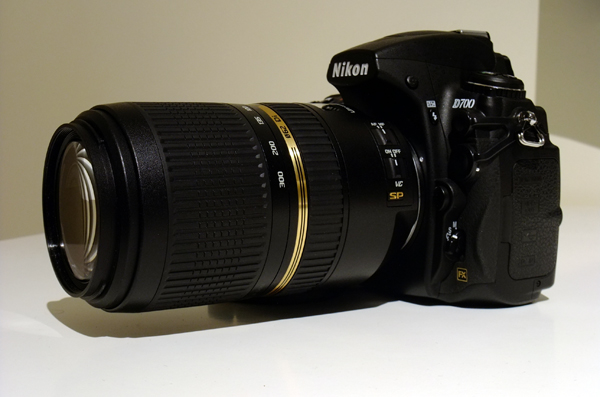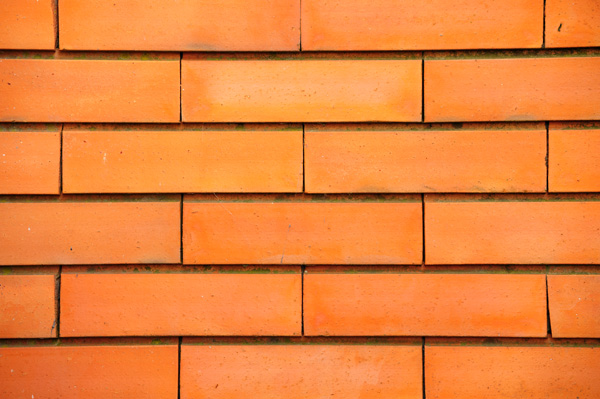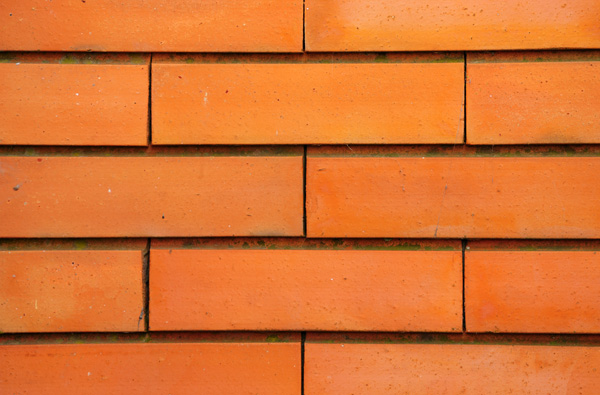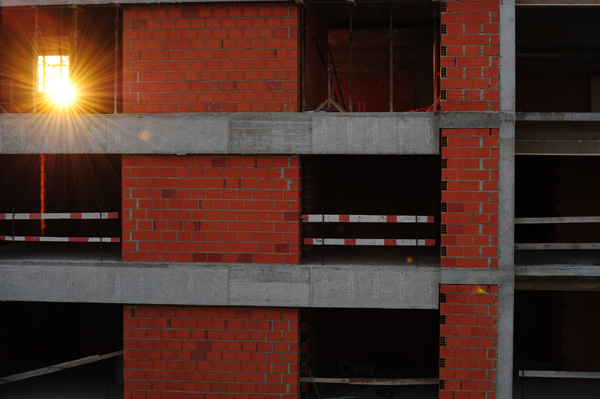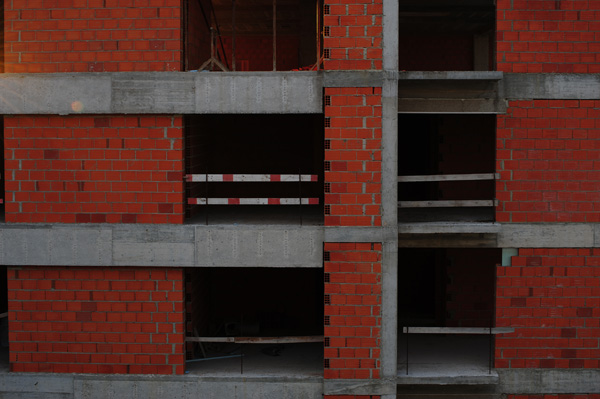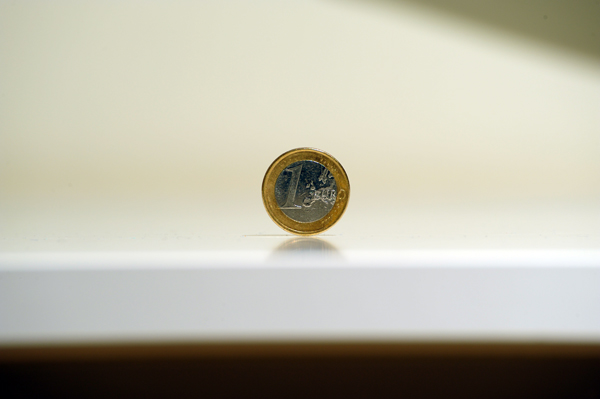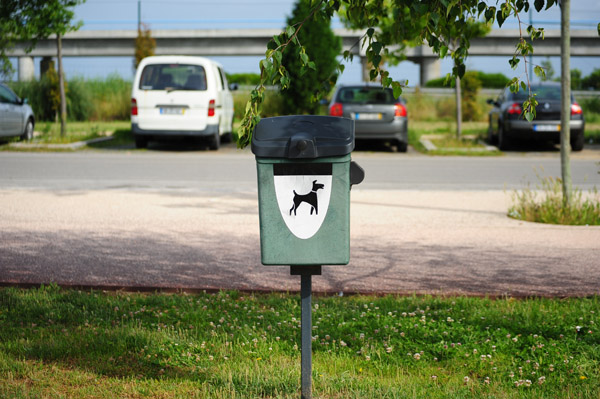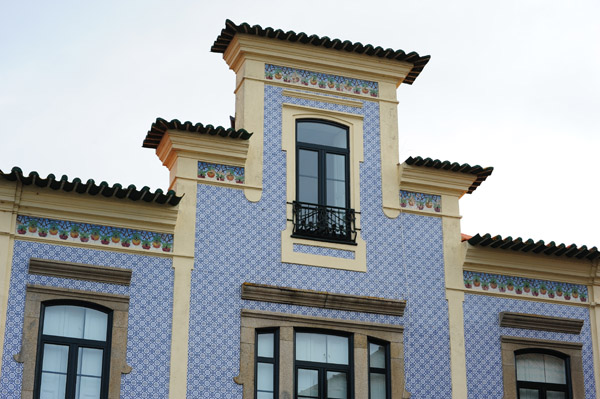Introduction

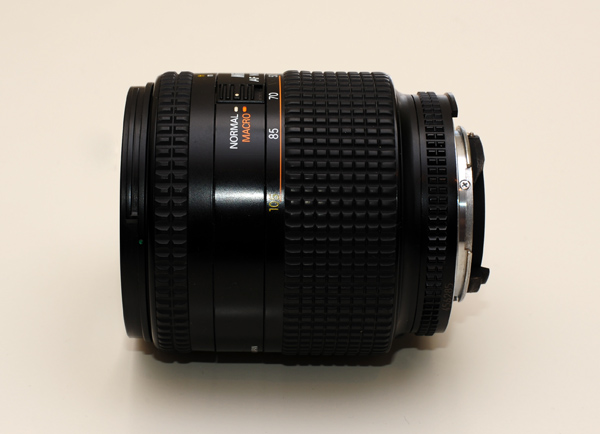

Here is my review of the Nikkor AF 28-105mm f/3.5-4.5 D zoom lens for the Nikon mount, tested with the Nikon D700 full-frame DSLR. This is a practical zoom lens for walking around that has a useful wide to mid telephoto coverage, which is great for street shooting, from wide scenes to portraits.
Take a look at how the lens combines with the D700:
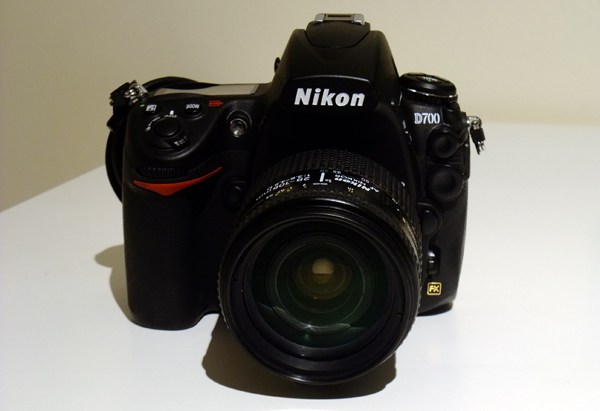

This lens was introduced in 1999 and was sold as a kit lens or as upgrade to the kit lens supplied with the Nikon F100. The lens includes 16 elements in 12 groups, one of those elements being of aspherical type to reduce optical distortions. It’s an all-plastic made lens, at least on the outside (including the filter thread), except for the mount which is metal, but the plastic is high quality although is not rugged as the newer G lenses, being very smooth (too much) instead. The lens features an aperture ring with a lock at the f/22 position, making it compatible with the older manual SLRs.
It can be found today in the used market as a bargain; the prices range from about 90€ to 175€. I got mine as a temporary solution when I got into FX while I was waiting for other cheap lightweight options, and since then I’m having trouble finding a better affordable alternative. It has been worth every penny and much more! I’m looking forward to see how the upcoming Nikkor AF-S 24-85mm f/3.5-4.5 G does and how much it costs, because maybe this could be a good replacement.
Technical Specifications
| Focal length | 28 – 105mm |
| Maximum aperture | f/3.5 – f/4.5 |
| Minimum aperture | f/22 – f/29 |
| Field of view | 74 – 23 degrees (on FX) |
| Weight | 455g |
| Dimensions | 84 x 72mm (120 x 72mm extended) |
| Optical construction | 16 elements in 12 groups (1 aspherical element) |
| Aperture blades | 9 |
| Filter diameter | 62mm |
| Minimal focus distance | 124.5cm (4.5cm from the front element) |
| Hood | HB-18, rounded and very enlarged up front |
| Mount | Nikon F |
Mechanical Characteristics
| Zoom ring | Plastic with rubber finish |
| Focus ring | Plastic with rubber finish, with infinity stop |
| Focus throw | 30 degrees (with focus limiter), 74 degress (without) |
| Focus motor | No |
| Optical stabilizer | No |
| Front element rotation while zooming | Yes, 185 degrees |
| Front element rotation while focusing | No |
| Internal focusing | Yes |
| Lens extension while focusing | No |
| Lens extension while zooming | Yes, up to 37mm |
| Maximum magnification | 1:2, at 105mm |
Handling
The Nikkor is a small and lightweight lens for FX standards, particularly when compared with modern G lenses with internal focus motor, like the Nikkor AF-S 24-120mm f/3.5-5.6 G zoom lens. The lens looks nice, except when the ugly hood is attached – it’s an absurdly huge hood, rounded and very enlarged up front, like a funnel. I never use the hood, but if I needed one I’d look for other third-party alternatives.
Using the lens may be disappointing at times, especially when trying to frame the subject with precision. The Nikkor is all-plastic made at least on the outside, including the filter thread (except the mount which is metal), and both the zoom and focus rings have a rubber finish for enhanced grip. The problem is that the zoom ring isn’t damped, in fact it’s the worst zoom lens I ever used (I thought the Nikkor AF 28-80mm f/3.3-5.6 G was the worst). Zooming is all but smooth and feels like rubbing plastic on plastic, and the ring gets stuck all the time, making precise framing very hard. Also, zooming is very non-linear; the change in magnification seen in the viewfinder doesn’t act linearly as the zoom ring is turned around. To make things even worse, the front element rotates a lot while zooming, being an absolute nightmare when shooting with a polarizer.
On the other hand, the focus ring is much smoother and never gets stuck, but it’s pretty much useless for manual focusing due to the very short throw. There’s a switch on the lens that limits the minimal focus distance to 0.5 meters, which makes focusing quick (but not lightning quick) on the D700 when the limiter is activated. To turn off the limiter, one has to zoom in at least to 50mm, but once the switch is moved there’s no way back to wider focal lengths, unless the user focuses some object between 0.5 meters and infinity. It’s a bit cumbersome at first but one gets used to it.
The 28-105mm has a very good close focus capability, reaching a maximum magnification ratio of 1:2 at 105mm. Mind you, this feature isn’t perfect though; the center resolution is very good, but the corners never reach the same level because of the huge field curvature at that setting.
So, regarding handling, this lens feels very cheap but it’s not that bad for a walkaround lens. I prefer to use a lightweight lens like this on the streets instead of a 24-120mm f/4 VR, for example. Besides, you may be positively surprised with the image quality if you manage to find a good copy.
Resolution
For the resolution test I shot the 5 Euro bill as usual. Focus was achieved using Live View to avoid auto-focus imprecisions and to compensate for possible field curvature issues.
The first column shows a crop of the image center, the corner crop is on the second column and the third column shows a crop of the extreme corner. Each row represents an aperture setting, from maximum to f/22 in full stops. Here are the results:
28mm

At 28mm the center resolution is already excellent right from f/3.5 and only starts to get worse at f/16 due to diffraction. The corner and border resolution never reach the same level, but is more than acceptable and stays constant until f/22 where resolution drops significantly. The edge-to-edge resolution is good but could be better especially when stopped down, as happens with most lenses, but instead remains constant trough the aperture range.
70mm

By 70mm the resolution in the center remains on an excellent level and corners follow very closely. Only the extreme corner performance is noticeably worse, being a little soft until f/8, but at f/11 there’s a sudden jump in quality. This isn’t very noticeable outside the studio, but if you need excellent resolution in the entire frame then f/11 is the aperture to choose here.
105mm
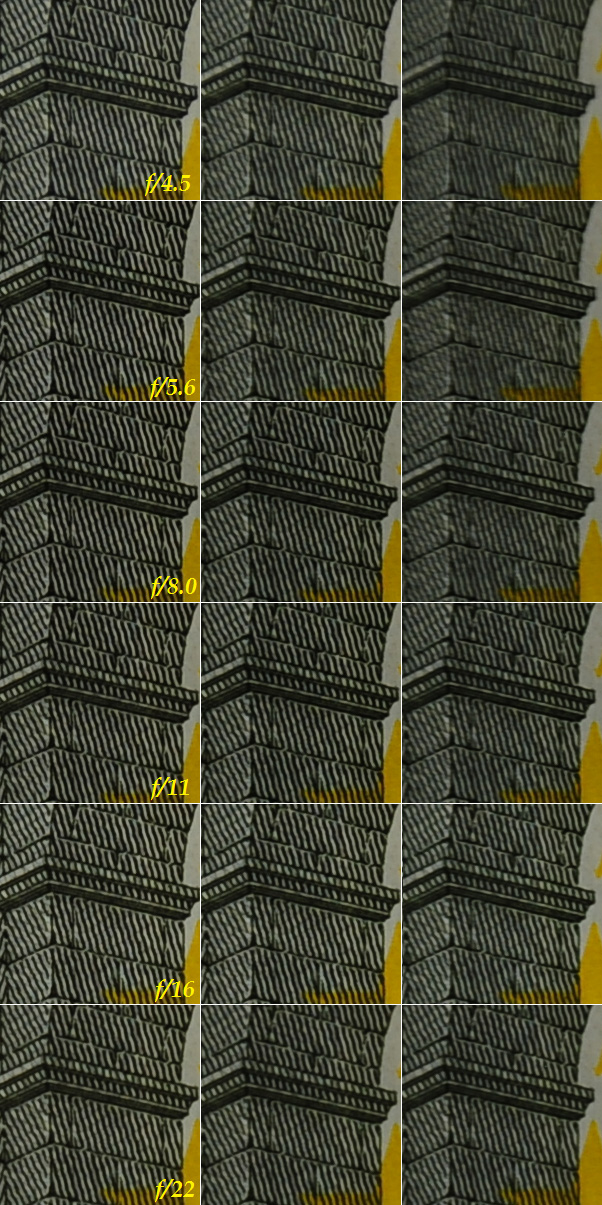
At 105mm the lens continues to deliver great resolution figures straight from the maximum aperture of f/4.5, and only the extreme corners are visibly softer. The resolution characteristic here is identical to the one at 70mm. Some owners of this lens say that the lens is very good at all focal lengths except at 105mm. Au contraire, my copy is worse at the wider end; for my type of shooting I wish it had better resolution here than at 105mm.
Like I said before, at the macro setting at 105mm, the center resolution is great (like as seen above at 105mm), but the corners are always much worse and don’t improve much, even when closing the diafragm to the minimum of f/29. But it’s nice when your subject fills the center of the frame, anyway.
Regarding resolution, this Nikkor is a solid performer and produces stunning pictures on the D700. It could be a little better at 28mm at the edges, of course, but that’s about it.
Distortion
Here are the brick wall shots:
28mm
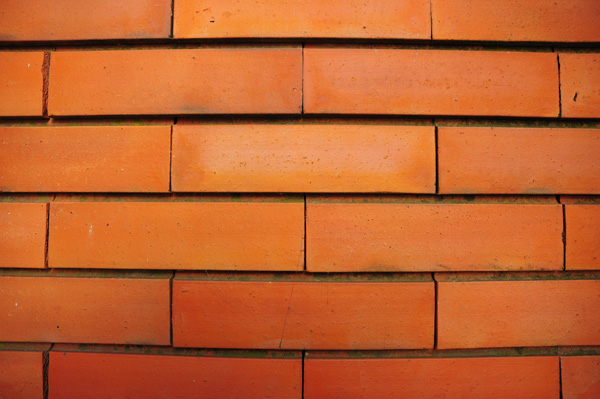
70mm
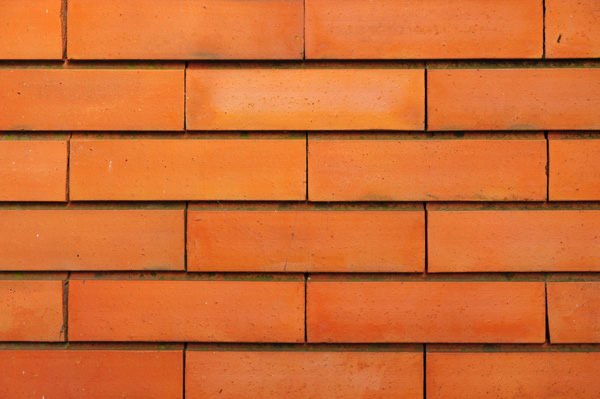
105mm

At the widest focal length, the lens produces a considerable amount of barrel distortion. This can be almost entirely corrected in post-processing, and I say “almost” because even then the pictures still have a residual mustache distortion. It’s not problematic though, unless you need perfectly distortion-free images. At the other focal lengths there’s nothing to complain about because distortion disappears completely.
Vignetting
In this test, I shot a white wall at home using tungsten white balance and set exposure manually:
28mm

At 28mm, vignetting is strong wide-open and down to f/4. By f/5.6 the light losses are average but improve greatly afterwards.
70mm

At 70mm, there is just a bit of vignetting at f/4.5 but vanishes stopping down, resulting in very uniform light distribution across the frame.
105mm
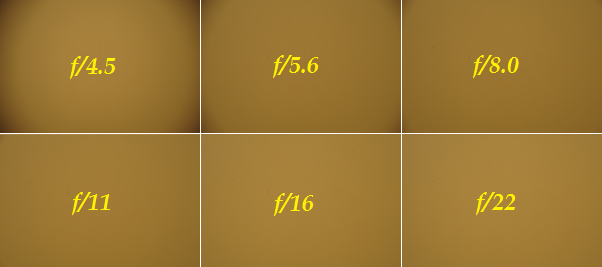
At 105mm, the lens vignettes wide-open down to f/5.6, but from f/8 there aren’t traces of it anymore.
The lens suffers from vignetting more at 28mm, at the f/3.5 and f/4 settings. Nothing that can’t be solved in post-processing, though. At other apertures and focal lengths this isn’t an issue.
Chromatic aberrations
For this test I shot a car from above on a bright sunny day early in the afternoon:
28mm

105mm

As happens with older lenses without special low dispersion elements, there’s a noticeable amount of purple friging in high contrast areas at the maximum aperture at all focal lengths. It’s not visible when looking at the entire image on my monitor, but viewing at 100% may reveal fringing reaching several pixels wide. Stopping down brings the problem to a negligible effect, which may still be noticeable in careful pixel-peeping. Overall it’s still a good performance from any lens.
Coma
Coma was tested using a LED source, at home in a dark room.
I put the light source at the center (first column), corner and extreme corner of the frame (second and third columns, respectively), at maximum aperture and stopped down.
28mm

105mm

The lens suffers from heavy coma, putting it on par with other old lenses, especially at the wider end. Obviously it’s not a good candidate to take out for astrophotography.
Flare
I shot a building in construction with the sun sneaking from a window, to see if I could see any flare vestiges. I started to shoot directly against the sun, then placed the sun at the corner and finally made some shots with the sun just outside the frame.
 |
| Shot directly against the sun. |
 |
| Shot with the sun placed at one corner of the frame. |
 |
| Shot with the sun just outside the frame. |
The lens has a weak resistance to flare and ghosting that interferes on the overall image contrast. When shooting against the sun there’s a huge halo around it that occupies almost the entire image. Placing the sun at one corner reveals the multiple internal reflections, which are very visible in the entire frame towards the opposite corner. Even when the sun is already outside the frame, there’s almost a 100% probability of still having problems. Unfortunately, since the supplied lens hood is so large at the front, it only reduces the problem a bit when the sun is just outside the frame, and that’s another reason I don’t use it at all (besides the ugly look).
In conclusion, this is the worst case I’ve dealed with so far. But since normally people never shoot against the sun or at the proximity, in practice this isn’t an issue.
Bokeh
The lens has 9 aperture blades, thus it’s expected to get circular out of focus highlights. I took a defocused picture at the widest aperture of the city lights and got crops of the center, corner and extreme corners. The test was repeated for the subsequent two stops.
28mm

105mm

The bokeh from this lens is almost perfectly circular in the entire frame, in fact so far it’s the most constant characteristic I’ve seen. There’s only a little distortion in the extreme corners, but there’s no cats-eye distortion or any worse drastic effects. On the down side, the bokeh is never smooth on the inside and the edges are very pronuntiated, especially at the widest focus length.
Overall, the lens has a better than average bokeh characteristic, and produces very nice out of focus renderings in all situations without interfering negatively with the subject.
Macro/Close-up
With the focus limiter activated, the Nikkor was capable to focus as close as 44 centimeters from the sensor plane, or 32 centimeters from the front element, resulting in a maximum magnification ratio of 1:5.2 at 105mm. When the focus limiter is switched off, the focus distance drops down to 16.5 centimeters from the sensor plane or 4.5 centimeters from the front element, to a maximum magnification ratio of 1:2 at 105mm.
I shot an 1 Euro coin and this is what to expect at the minimum focus distance:
28mm

105mm

105mm, focus limiter off

Summary
| Build quality | 4 | Almost entirely plastic-made and feels cheap |
| Handling | 5 | An useful zoom lens with decent AF speed and features, but zooming is disappointing in many aspects |
| Resolution | 8 | Great resolution overall, but could be improved a little at 28mm |
| Distortion | 8 | Noticeable barrel distortion at 28mm, but disappears afterwards |
| Vignetting | 8 | A little strong at biggest apertures, but good looking otherwise |
| Chromatic aberrations | 8 | Only visible at maximum aperture at all focal lengths while pixel-peeping |
| Coma | 5 | A lot of coma especially at 28mm, but always present at other focal lengths |
| Flare | 3 | Very weak resistance against flare, and the hood doesn’t help here |
| Bokeh | 7 | Circular but very nervous with accentuated edges at 28mm, but improves at 105mm |
| Overall | 67% | A very sharp and handy lens in FX that bears other good optical characteristics, but there’s an equal number of downsides too |
A final remark
On a very subjective opinion, the final score doesn’t reflect how great and handy this lens can be on the street if one takes some basic precautions. As long as you shoot with the lens stopped down on sunny days and never shoot against the sun, the lens can produce fantastic images with good color (a bit on the conservative way), good bokeh and relatively low distortion.
Thus, for anyone starting with FX with limited funds, this lens is the one to start with. There are many other alternatives with similar focal range, but the 28-105mm is hard to beat in resolution, regardless of price. In fact, I’ve seen much worse from third-party lenses with constant f/2.8 aperture.
In few words, this is a cheap lens that produces fantastic results, as long as you take the precautions refered above and can live with the many mechanical limitations.
Samples
Here are some samples of pictures I made with this lens. Settings: native JPEG, picture control set to Landscape mode, no post-processing applied except reducing to 600 pixel width.
 |
 |
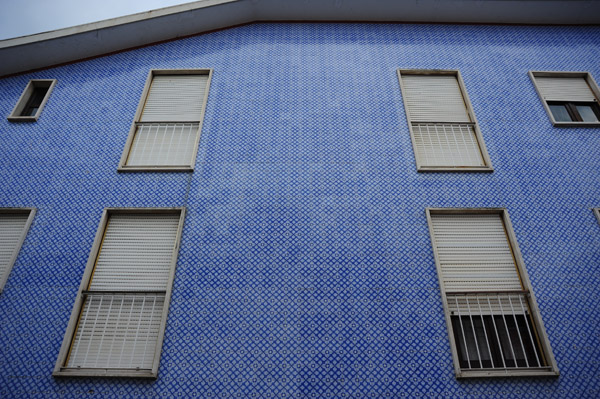 |
 |
 |
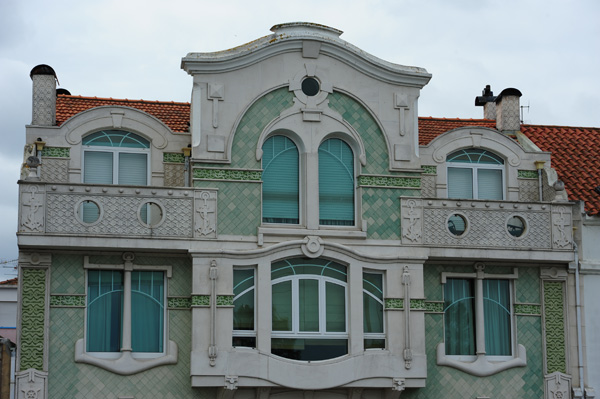 |




